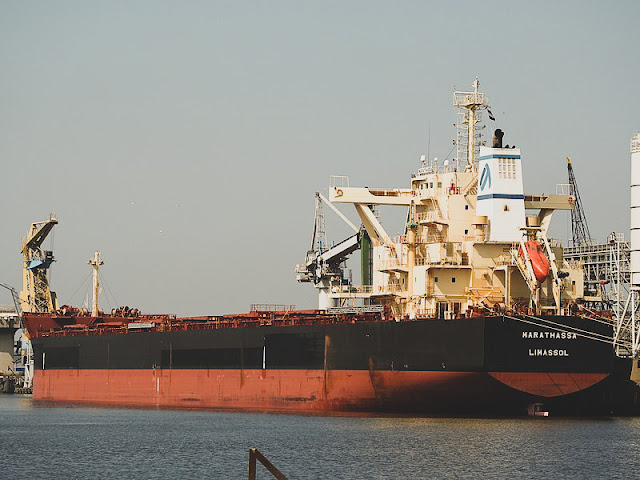Update on the MV Marathassa
You’ll recall that in November, 2018 the British Columbia Provincial
Court decided that the MV "Marathassa" was not guilty of charges
under section 125(1) of the Canadian Environmental Protection Act (CEPA), which prohibits the
unauthorized disposal of a substance at sea (see my previous post here: http://www.canadianmaritimelaw.com/2018/11/only-deliberate-disposal-is-offence.html).
In that case, the court concluded that CEPA provision did
not apply because the spill in question, an accidental leak of some 2700 litres
of fuel oil into Vancouver's English Bay, was not alleged by the Crown to be intentional -
i.e. CEPA does not apply to accidental discharges - only intentional ones - and evidence must be led accordingly.
Lawyers for the Marathassa essentially (and successfully) argued that the proper
legislative regime which relates to allegations of the accidental
release of oil into the sea is the Canada
Shipping Act, particularly s. 187,
which states that:
s.
187. No person or vessel shall discharge a prescribed pollutant, except in
accordance with the regulations made under this Part or a permit granted under
Division 3 of Part 7 of the Canadian
Environmental Protection Act, 1999.
Accordingly, the door was left open for a prosecution under that
provision.
On February 7, 2019, the Provincial Court of British Columbia issued its
decision on that very prosecution.
In summary, the Crown was able to prove beyond a reasonable doubt that the MV
Marathassa discharged a pollutant into the waters of English Bay contrary to
section 187 of the Canada Shipping Act,
however, the Marathassa was able to establish the defence of due diligence. In
the words of the court, that defence was made out because:
“Conclusion on the Due Diligence Defense
[281] The fuel
oil spill on April 8, 2015, related to a mistake of fact by the Marathassa
that the vessel was built to industry standards with no defects. That
belief was honestly and reasonably held. The defects in the high level
alarms and the valve were not foreseeable. All of the alarms were tested
on a weekly basis and no concerns arose. The alarms panel on the Bridge
was tested every four hours without any concerns.
[282] The debris
in the valve was not apparent to the naked eye and remained in the valve even
after the valve was hand and wrench tightened. It was not discovered by
the crew when they checked the valve on the night of April 8, by Transport
Canada on April 9, or by the crew when they hand and wrench tightened the valve
on April 9. It was only discovered when the crew, with the knowledge of
the path of the spill, disassembled the valve.”
The case can be found here: https://www.canlii.org/en/bc/bcpc/doc/2019/2019bcpc13/2019bcpc13.html?searchUrlHash=AAAAAQAEIk1WIgAAAAAB&resultIndex=1
 |
| MV Marathassa in Port |
